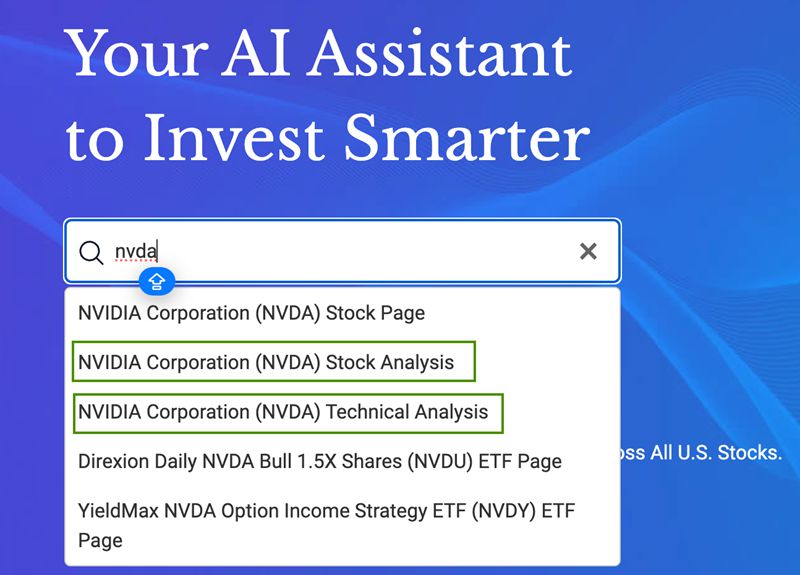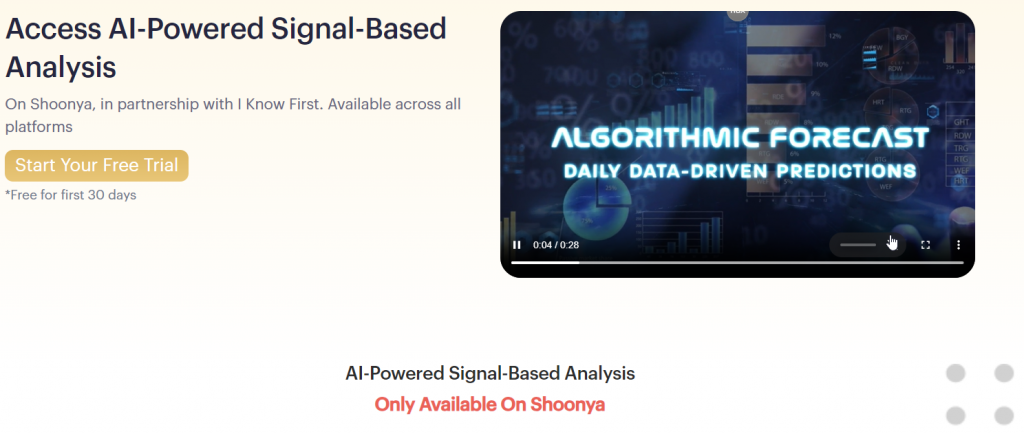20 Good Ways For Picking Chart Ai For Trading Sites
20 Good Ways For Picking Chart Ai For Trading Sites
Blog Article
Top 10 Tips For Assessing The Market Coverage For Ai Trading Platforms For Stock Prediction And Analysis.
Market coverage is an essential element to take into consideration when evaluating AI trading platforms for stock prediction or analysis in that it defines the breadth and depth of assets and markets you are able to access. Market coverage is essential because it permits you to diversify your portfolio, learn about global markets, and adapt various trading strategies. Here are the top 10 tips to determine the market coverage of these platforms.
1. Evaluate Supported Asset Classes
Stocks - Ensure that you have access to the major stock exchanges such as NYSE and NASDAQ. Additionally, make sure that your platform has small-caps and mid-caps.
ETFs - Check to see the platform you use supports the wide range of ETFs which offer exposure in many different sectors, regions or themes.
Futures and options. Make sure that the platform is compatible with derivatives, such as futures contracts, options, and leveraged instruments.
Forex and commodities: See whether your website offers Forex and commodities, precious metals, and energy commodities.
Cryptocurrencies: Check to see whether your application supports most popular cryptocurrencies, including Bitcoin, Ethereum and altcoins.
2. Make sure you check the area of coverage
Global markets: Make sure that the platform is inclusive of major global markets like North America, Europe and Asia-Pacific.
Regional focus Verify that the platform specializes on certain regions or markets which are in line with your interest in trading.
Local exchanges: Determine if your platform supports regional and local exchanges relevant to your business or your strategy.
3. Compare Real-Time vs. Data that is delayed
Real-time data is essential to speed up decision-making, particularly in active trading.
Delayed data: Check if delayed data is available at no cost or at a cheaper cost, which could be sufficient for long-term investors.
Data latency. Examine whether the platform reduces the time it takes to process real-time feeds particularly for high-frequency trading.
4. Assess the historical data availability
Depth of historic data: Verify that the platform has ample data (e.g. more than 10 years old) to backtest.
Check the granularity of historical data.
Corporate actions: Check if historical data accounts for stock splits, dividends, and other corporate actions.
5. Review market depth and order details
Platforms must provide Level 2 data (order-book depth) to improve price detection and execution.
Verify the bid-ask ranges in order to confirm the accuracy of pricing.
Volume data: Make sure the platform provides detailed information on volume for analysing market and liquidity activities.
6. Examine Coverage for Indices and Sectors
Major indices: Check that the platform includes the most important benchmarking indices that are used for index-based strategies and other purposes (e.g. S&P 500, NASDAQ 100, FTSE 100).
Industry-specific data If you're looking to do a targeted analysis, look into whether there are any data available for specific industries.
Customized indexes. Make sure that the platform is capable of creating and tracking custom indices according to your needs.
7. Examine the integration of News and Sentiment
Feeds for news: Make sure the platform incorporates real-time feeds of news and information from reliable sources, like Bloomberg and Reuters for events that affect the market.
Sentiment Analysis: Verify if the platform offers sentiment analysis tools that are made from social media, news or other data sources.
Event-driven strategy: Make sure that the platform supports events-driven trading strategies (e.g. announcements of earnings, economic reports).
8. Check for Multi-Market Trading Capabilities
Cross-market Trading: Verify that the platform allows traders to trade across a variety of market segments and asset classes using an integrated interface.
Currency conversion: Check whether the platform supports multi-currency as well as automatic conversion of currencies for international trade.
Time zone support: Check if the platform accommodates trading in different time zones that are used for trading on global markets.
9. Evaluation of alternative data sources
Alternate data sources: To gain unique insights, verify if the platform is able to incorporate alternative sources of data.
ESG data: Check whether the platform offers environmental governance, social and (ESG) information to support socially responsible investments.
Macroeconomic data: Make sure the platform provides macroeconomic indicators to conduct fundamental analysis (e.g. GDP and inflation rates, as well as rate of interest).
Check the User Feedback and Review the Market Reputation
User reviews: Examine user feedback in order to evaluate the platform's market coverage as well as its reliability and usability.
Examine the platform's reputation. This includes awards and acknowledgement from experts in the industry.
Case studies: Check for case studies, testimonials and other information that highlights the platform's performance on certain markets or asset categories.
Bonus Tips
Trial period - Use the free demo or trial to test out the coverage of data and market coverage.
API access: Check whether the platform's API permits access to market data in a programmatic manner for customised analysis.
Support for customers. Be sure the platform provides assistance with regard to market or data questions.
These guidelines will assist you to assess the market coverage provided by AI trading platforms that predict/analyze the prices of stocks. This way, you'll be able select the one that provides you with the data and markets you require to be successful in trading. Market coverage that is comprehensive allows investors to diversify their portfolios, explore new possibilities, and adjust to the changing market conditions. Have a look at the most popular ai trading app recommendations for site advice including getstocks ai, stock market software, trading chart ai, best ai stock trading bot free, chart ai trading, chart analysis ai, best ai for trading, copyright financial advisor, chart ai trading, ai hedge fund outperforms market and more.
Top 10 Tips To Assess The Latency And Speed Of Ai Trading Platforms
When you are evaluating AI trading platforms that forecast or analyze the price of stocks speed and latency are key factors, particularly for high-frequency and algorithmic traders. Even milliseconds delay can have an impact on the profitability of trading. Here are the 10 best methods to gauge the speed of your platform.
1. Assess the Real-Time Data Feeds
Time to deliver data: The platform should provide precise, real-time data in the shortest amount of time (e.g. with sub-millisecond delays).
Data source proximity - Look to determine if the servers of your platform are within major exchanges. This will cut down on the time for data transmission.
Data compression - Make sure that the platform employs effective data compression techniques to increase data delivery speed.
2. Check the trade execution speed
Processing orders: The platform's capability to execute and process trades fast when an order is placed.
Direct Market Access (DMA) - Ensure that the platform supports DMA. This lets orders go directly to the exchange without the need for intermediaries.
Review the execution reports to see whether they contain timestamps for order confirmation fill, submission, and confirmation.
3. Review the responsiveness of the Platform
User interface (UI), speed test the platform's response time to inputs.
Chart updates Verify whether charts and visualizations are updated in real-time update with no lag.
Performance of mobile apps If you're using a mobile application, ensure that it runs at the same speed as a desktop version.
4. Find out if the network infrastructure is low-latency.
Servers' location: Make sure the platform is using low-latency servers that are close to exchanges and financial hubs.
Co-location services: Find out whether the exchange offers colocation services that allow the hosting of your trading algorithms on servers near to the exchange.
High-speed networks: Verify if the platform uses fiber-optic networks with high speeds or other low-latency technology.
5. Backtesting the simulation speed and test backtesting
Historical data processing: Check the speed at which your platform analyzes and processes data from the past.
Simulation latency: Ensure the platform simulates trades in real-time without significant delay.
Parallel processing: Check if your platform uses parallel or distributed computing to speed up calculations.
6. Calculate the API Latency
API response time The API response time is the rate at that an API platform responds to requests.
Rate limits: Determine if API has acceptable rates limits to prevent delays in high-frequency transactions.
WebSocket Support: Check if the platform supports WebSocket protocols that stream data in real-time with low latency.
7. Test the stability of the platform under load
High-volume trading to test the platform's responsiveness and stability, simulate high-volume scenarios.
Test your platform during periods of extreme market volatility.
Utilize the tools available on the platform to test your strategies under extreme conditions.
8. Assess Connectivity and Network
Internet speed requirement: To achieve optimal performance, make sure that your internet connection speed is at the speed of your preferred platform.
Redundant connections: Check if the platform has redundant internet connections in order to avoid the possibility of downtime.
VPN latency: If using a VPN be sure to check whether it has a significant amount of latency, and if the service has alternatives.
9. Look for Speed Optimisation Features
Pre-trade analytics - Make sure that the platform you choose to use has analytical tools for pre-trade to improve the routing of orders.
Smart order routing: Check whether your application is using SOR to locate the most efficient and speediest execution venue.
Utilize the tools of the platform to analyze and monitor the latency in real-time.
Review User Feedback & Benchmarks
User reviews: Review user feedback to determine the platform's speed and latency performance.
Benchmarks from third-party sources: Search for independent reviews or benchmarks that compare the speed of the platform with those of its competitors.
Case studies: Verify whether a platform offers cases studies or testimonials that demonstrate the low-latency capabilities.
Bonus Tips
Free trial period: Test the platform’s latency and speed in real-world situations using the demo or free trial.
Customer support: determine if the platform has assistance for issues with latency or for optimization.
Hardware requirements: Find out if the platform requires specific hardware to ensure the best performance.
Following these tips can assist you in evaluating the speed of AI trading platforms that predict/analyze the prices of stocks. You will be able pick a trading platform which best suits your needs in trading and reduces the chance of delays. Low latency can be crucial for high-frequency or algorithmic traders where even a small delay could be a significant factor in their profits. Read the top rated copyright financial advisor blog for more examples including ai chart analysis, best stock analysis website, ai trading tools, stock ai, best ai trading app, ai trading tools, ai trade, free ai trading bot, chart ai for trading, copyright financial advisor and more.